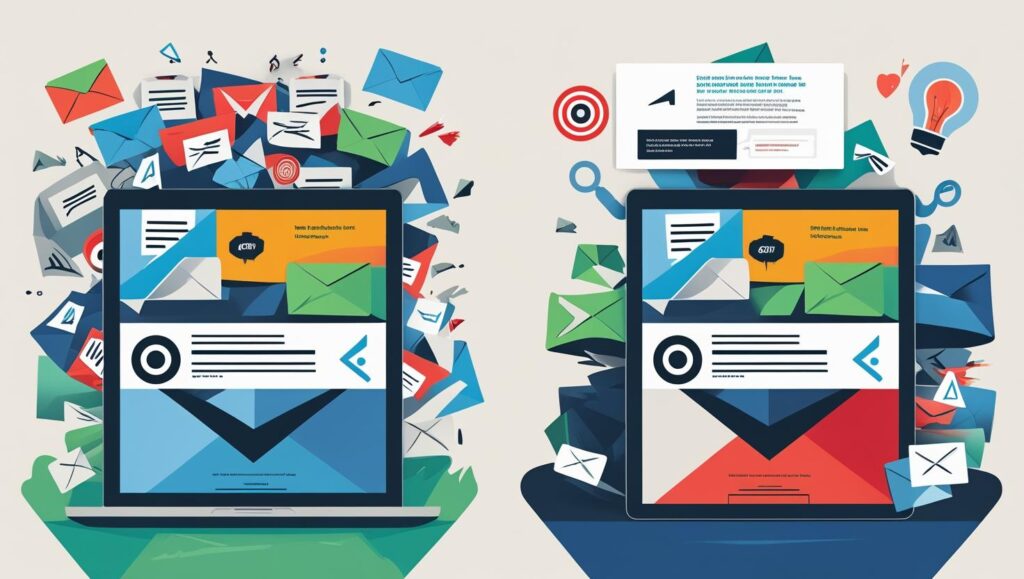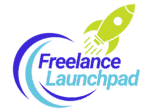For many new freelancers, sole traders, and owner-operators, the thought of sending a cold email to a potential client can be daunting. It conjures images of spam folders, ignored messages, and rejection. But what if you could transform this often-feared marketing tactic into one of your most powerful tools for winning new business?
The truth is, cold emailing, when done correctly, is a highly effective way to directly connect with decision-makers, bypass competitive job boards, and secure your ideal clients. It’s not about mass-blasting generic messages; it’s about surgical precision, deep personalization, and undeniable value. This comprehensive guide will demystify the process, provide actionable strategies, and equip you with templates designed to cut through the noise and get real responses.

Why Cold Emailing Isn’t Spam (When You Do It Right)
Let’s address the elephant in the room: the “spam” perception. Many hesitate because they fear being seen as intrusive or irrelevant. However, the distinction between a useful cold email and spam is stark:
- Spam: Untargeted, generic, often unsolicited commercial messages sent in bulk without a recipient’s consent, focused solely on the sender’s agenda.
- Effective Cold Email: Highly targeted, personalized, value-driven messages sent to individuals who are likely to benefit from your services, focused on solving their problems.
Think of it less as “selling” and more as “problem-solving.” You’re reaching out to offer a solution to a challenge they might not even realize they have, or to improve an area of their business.

“Treat your subject line like the movie trailer – give a preview so they know what to expect”.
– Anonymous
The Undeniable Power of a Well-Crafted Cold Email
In a world saturated with online job boards and crowded marketplaces, cold emailing offers distinct advantages for freelancers:
Higher Potential for Long-Term Relationships: By initiating a direct, value-driven conversation, you lay the groundwork for a more collaborative and enduring client relationship.
Direct Access to Decision-Makers: You can directly reach the person who has the authority to hire you, cutting through gatekeepers and lengthy application processes.
Less Competition: While job boards can have hundreds of applicants for a single role, a personalized cold email allows you to stand out from the crowd and engage in a one-on-one conversation.
Targeting Your Ideal Clients: You choose who you want to work with, allowing you to pursue businesses that align with your expertise, values, and desired compensation. This means more fulfilling work and better rates.
Proactive Client Acquisition: Instead of waiting for opportunities, you actively create them, taking control of your client pipeline.

In a world saturated with online job boards and crowded marketplaces, cold emailing offers distinct advantages for freelancers.
Data supports the effectiveness of targeted outreach. According to HubSpot research, 89% of customers would like to hear from salespeople via email as their preferred method of contact [1]. While this research pertains to sales, the principle of email as a preferred communication channel for business interactions holds true for freelancers initiating contact. Another study by Close.com suggests that well-executed cold emails can achieve open rates between 15% and 25% and response rates between 5% and 10%, with highly targeted campaigns sometimes yielding even higher results [2]. These figures, while not guaranteed, highlight the potential when your approach is strategic.
When you start with what’s at stake for the buyer, you earn the right to their attention
Jake Sorofman



Before You Hit Send: The Preparation Phase
Success in cold emailing isn’t about luck; it’s about meticulous preparation. Before you even think about writing a single word, you need to do your homework.
1. Know Your Ideal Client Inside Out
This is the cornerstone of effective cold outreach. Without a clear understanding of who you’re targeting, your emails will fall flat.
- Define Your Niche: Are you a web designer for e-commerce stores? A copywriter for SaaS companies? A social media manager for local restaurants? The more specific you are, the easier it is to identify potential clients and tailor your message.
- Identify Pain Points: What common challenges do businesses in your chosen niche face? (e.g., low website traffic, poor brand messaging, inefficient processes, outdated marketing). Your service should be the solution to one or more of these pain points.
- Research Potential Clients:
- Company Website: Look for their “About Us” section, recent news, case studies, and their services. This gives you insight into their mission, values, and current projects.
- LinkedIn: This is your goldmine. Identify the key decision-makers (e.g., Marketing Director, Head of Content, CEO for smaller businesses). Look at their job descriptions, recent posts, and mutual connections.
- News & Publications: Has the company recently launched a new product, received funding, or been in the news? This provides excellent personalized hooks.
- Competitor Analysis: Look at what your ideal clients’ competitors are doing well or poorly. This can sometimes spark an idea for how you can help.
2. Refine Your Offer and Value Proposition
Before you reach out, you must be crystal clear on what you offer and, more importantly, the value that offering brings.
- What Problem Do You Solve? Instead of saying, “I’m a graphic designer,” say, “I help startups create compelling visual identities that attract investors and stand out in crowded markets.”
- Your Unique Selling Proposition (USP): What makes you different? Is it your specific niche expertise, your unique process, your speed, or your proven results?
- Prepare Your Portfolio/Case Studies: Have readily accessible links to your best work that directly demonstrates your ability to solve the problems you’re addressing. Even if you’re new, use personal projects, pro bono work, or mock-ups to showcase your skills.
3. Finding Contact Information Ethically
Once you’ve identified your ideal client and the specific person you want to reach, you need their email address.
- Company Websites: Often, you’ll find general contact forms or email addresses like info@company.com. Sometimes, individual staff emails are listed.
- LinkedIn: While direct emails aren’t always visible, many people include them in their “Contact Info” section.
- Email Finder Tools: Tools like Hunter.io, Skrapp.io, or Clearbit Connect can help deduce email patterns (e.g., firstname.lastname@company.com) or find verified emails. Always use these ethically and be mindful of data privacy regulations (like GDPR or CCPA) if contacting individuals in certain regions [3]. It’s crucial to ensure your use of these tools complies with all relevant legal frameworks.
- Google Search: Try searching variations like “[Name] email [Company Name]” or “[Name] @ [Company Name] email.”
4. Crafting an Irresistible Subject Line
The subject line is the gatekeeper to your email. If it doesn’t grab attention, your perfectly crafted message will never be read.
- Be Specific and Intriguing: Avoid vague phrases. Instead of “Freelance Services,” try “Idea for your recent blog post on X.”
- Personalize It: Include the recipient’s name or company name. “Quick question about [Company Name]’s marketing strategy.”
- Highlight a Benefit or Pain Point: “Improving [Company Name]’s lead generation” or “Solution for your [Problem].”
- Keep It Concise: Aim for 30-50 characters, as many recipients view emails on mobile devices.
- Consider a Question: “Thoughts on your Q3 content strategy?”
- Avoid Salesy Language: Words like “Free,” “Discount,” or excessive capitalization can trigger spam filters.
Examples of Effective Subject Lines:
“Introduction: [Your Name] + [Their Company Name]”
“Quick thought on [Company Name]’s content”
“Idea for your [specific project/product]”
“Regarding your team’s [identified challenge]”
“Improving [Client’s Goal] at [Company Name]”
COME AND SHARE YOUR WINS ON FACEBOOK
Introduce Yourself on Our
Facebook Page
The Anatomy of a Winning Cold Email
Now, let’s break down the components of a cold email that actually gets responses. Every section has a specific purpose.
1. The Personalized Opening (The Hook)
This is where you immediately demonstrate you’ve done your homework and aren’t sending a generic blast. It builds instant rapport and credibility.
- Reference Something Specific: Mention a recent company achievement, a new product launch, a LinkedIn post the recipient shared, or a shared connection.
- Weak: “I hope this email finds you well.”
- Strong: “I saw your recent article on [Topic] and was particularly interested in your insights on [Specific Point]. Fantastic read!”
- Strong: “I noticed [Company Name] recently launched [New Product/Service]. Congratulations, it looks like a game-changer for [Industry].”
2. The Problem (Show You Understand)
Briefly articulate a problem or challenge that your ideal client likely faces, and which your service can solve. This shows empathy and relevance.
- “Many businesses in the [Industry] space struggle with [specific problem, e.g., generating consistent leads from their website].”
- “I’ve observed that businesses often find it challenging to [another problem, e.g., create engaging social media content that truly resonates with their audience].”
- Connect it directly to their potential needs: “Given [Company Name]’s focus on [their goal, e.g., expanding into new markets], I imagine that [related problem, e.g., localized content creation] might be a hurdle.”
3. Your Solution (The Value Proposition)
This is where you connect your service to their problem. Focus on the benefits they’ll receive, not just the features of what you do. Quantify results where possible.
- “My expertise in [Your Service/Skill, e.g., conversion copywriting] helps businesses like yours turn more website visitors into paying customers, often leading to a [X%] increase in conversions.”
- “I specialize in [Your Service, e.g., crafting SEO-optimized blog content] that not only ranks well but also positions clients as thought leaders, resulting in [X%] organic traffic growth.”
- Briefly mention your unique approach or relevant experience without going into lengthy detail. “My process involves [brief mention of your unique approach], which has consistently delivered [positive outcome] for previous clients.”
4. Social Proof (Building Trust)
Briefly mention a past client, a quick statistic, or a strong testimonial to build credibility. This helps alleviate risk in the recipient’s mind.
- “I’ve helped companies like [Similar Client 1] and [Similar Client 2] achieve [specific results, e.g., a 30% increase in online engagement].”
- “In my experience, strong [your service area, e.g., brand messaging] can increase customer trust by [X%] – something I’ve seen firsthand with clients in the [industry] sector.”
- Link to your portfolio or a relevant case study here, but keep it concise. “You can see an example of my work with [Similar Company] here: [Link to Portfolio/Case Study].”
5. Call to Action (Clear & Low Friction)
This is arguably the most critical part. Tell them exactly what you want them to do next, and make it as easy as possible for them. Avoid multiple calls to action.
- Low Friction: Don’t ask for a huge commitment. A short call or a quick send of information is ideal.
- Weak: “Would you like to hire me?”
- Strong: “Would you be open to a brief, 15-minute chat next week to explore how this could benefit [Company Name]?”
- Strong: “Would you be interested in seeing a quick case study that outlines how I helped a similar business achieve [X result]?”
- Strong: “If this sounds like a challenge you’re currently facing, perhaps a quick email exchange could determine if there’s a fit?”
6. Professional Closing
Keep it professional and concise.
- “Best regards,” “Sincerely,” “Thanks,”
- Your Name
- Your Title (e.g., Freelance [Your Service], Owner, Founder)
- Your Website/Portfolio Link
- Your LinkedIn Profile (Optional, but good for building trust)

Cold Email Templates for Freelancers
Here are a few templates based on different scenarios, designed to be adapted to your specific niche and the client you’re targeting. Remember to replace the bracketed placeholders [ ] with your specific details.
Template 1: The “Specific Problem Solver” Pitch
Use this when you’ve identified a clear, tangible problem that your service can directly address.
Subject: Idea for [Company Name]’s [Specific Area of Pain Point]
Hi [Client Name],
I was doing some research on [Company Name] and came across your [specific page, project, or recent news]. I noticed that your [specific area, e.g., blog content, website loading speed, social media engagement] could potentially be enhanced to [specific positive outcome, e.g., better attract your target audience, improve user experience, drive more leads].
Many [Client’s Industry] businesses struggle with [reiterate the specific problem, e.g., creating consistent, high-quality content that ranks well on Google], which can limit their [negative consequence, e.g., organic visibility and lead generation].
As a freelance [Your Service, e.g., SEO Content Writer] specializing in [Your Niche, e.g., B2B SaaS companies], I help businesses like yours to [explain your solution and benefit, e.g., develop data-driven content strategies and produce compelling articles that attract qualified traffic and convert readers into customers]. For example, I recently helped [Past Client Name/Type of Client] achieve a [X%] increase in organic traffic within [Y] months by revamping their blog strategy.
Would you be open to a brief 15-minute call next week to discuss how a similar approach might benefit [Company Name]? I’m confident I could share some actionable insights even in that short time.
Best regards,
[Your Name] Freelance [Your Service] [Your Website/Portfolio Link] [Your LinkedIn Profile (Optional)]
Template 2: The “Value-First / Idea Pitch”
This template is great when you have a specific idea that you believe would genuinely benefit their business, even if they haven’t explicitly articulated a problem.
Subject: Quick thought on [Company Name]’s [Relevant Area]
Hi [Client Name],
I’ve been following [Company Name]’s work in [mention something specific, e.g., the sustainable energy sector] and was particularly impressed by your recent announcement about [specific product/initiative].
While exploring your [e.g., online presence, marketing materials, social media strategy], I had an idea that I believe could significantly [positive outcome, e.g., boost your engagement, streamline your customer onboarding, enhance your brand’s message]. Specifically, I envision [briefly describe your idea, e.g., a series of short, animated explainer videos for your new product] that could help [Company Name] better communicate [specific benefit, e.g., complex technical details to a broader audience].
As a [Your Service, e.g., Motion Graphics Designer] with experience in [Your Niche, e.g., simplifying technical concepts for non-technical audiences], I specialize in transforming intricate information into visually engaging and easily digestible content. I’ve successfully implemented similar projects for [mention a type of client or specific client if possible, e.g., several fintech startups], helping them achieve [specific results, e.g., a 40% increase in user understanding and product adoption].
Would you be open to a quick 10-minute chat to hear more about this idea and see if it aligns with your goals for [relevant area]?
Thanks,
[Your Name] [Your Title, e.g., Freelance Video Producer] [Your Website/Portfolio Link]
Template 3: The “Referral / Mutual Connection” Approach
If you have a mutual connection or a referral, leverage it immediately to build trust.
Subject: Introduction via [Mutual Connection’s Name] / Follow-up to [Mutual Connection’s Name]’s suggestion
Hi [Client Name],
[Mutual Connection’s Name] suggested I reach out to you. They mentioned you might be looking for support with [specific problem/area mutual connection discussed, e.g., revamping your website’s user experience], and thought my expertise in [Your Service] could be a good fit.
I specialize in [Your Service, e.g., UX/UI design] for [Your Niche, e.g., B2C e-commerce platforms], helping businesses like yours create intuitive and engaging digital experiences that drive conversions and customer loyalty. For instance, I recently collaborated with [Company Name, if relevant and non-confidential] on a similar project, which resulted in a [X%] improvement in their website’s bounce rate.
Would you be available for a brief call sometime next week to see if there’s an opportunity for me to assist [Company Name] with your [specific project/area]?
Best regards,
[Your Name] [Your Title, e.g., Independent UX Designer] [Your Website/Portfolio Link]
Email marketing is like a first date. If you’re too pushy, you won’t get a second one
Neil Patel
The Crucial Follow-Up Strategy: Don’t Give Up!
Sending one email is rarely enough. The vast majority of deals are closed after multiple interactions. A study by Woodpecker.co found that sending just one follow-up email can increase your response rate by 21%, and sending 4-7 follow-ups can yield even better results [4].
Why Follow-Ups Are Essential:
- Busy Inboxes: Your initial email might have been buried, arrived at a bad time, or simply overlooked.
- Building Familiarity: Each follow-up reminds them of your value and builds a sense of familiarity.
- Demonstrating Persistence (Not Annoyance): There’s a fine line. Persistence shows you’re serious and committed, while annoyance is just spam.
How to Follow Up Effectively:
- Vary Your Message: Don’t just resend the same email. Add more value, provide a new insight, or ask a different question.
- Timing:
- Follow-up 1 (2-3 days after original): A gentle nudge. “Just wanted to bring this back to your attention…” or “Did you get a chance to review my previous email regarding X?”
- Follow-up 2 (5-7 days after the first): Provide a new piece of value. “I came across this article on [relevant topic] and immediately thought of [Company Name]…” or “Here’s a quick case study that outlines how I helped [client type] achieve [result].”
- Follow-up 3+ (7-10+ days after the second): You can continue to add value, share insights, or eventually send a “breakup email.”
- The “Breakup Email”: If you’ve sent 3-5 emails with no response, this is a polite way to get a definitive “no” or, surprisingly, a “yes.”
- “Hi [Client Name], I haven’t heard back regarding my previous emails about [topic]. I understand you’re incredibly busy, so I’ll assume now isn’t the right time. If anything changes, please don’t hesitate to reach out. Otherwise, I’ll close the loop on my end. Wishing you all the best with [Company Name]’s initiatives.”
Key Principles for Cold Email Success
Beyond templates and strategy, a few overarching principles will elevate your cold outreach:
- Personalization is King: I cannot stress this enough. Generic emails get deleted. Take the time to genuinely research and tailor each message.
- Focus on Their Needs, Not Yours: Your email should be about them, their problems, and how you can help them succeed. Your services are just the means to their end.
- Be Concise and Respectful of Time: Get to the point quickly. Busy professionals appreciate brevity.
- Provide Value Upfront: Even if it’s just an insightful observation or a valuable idea, give something before you ask for anything.
- Proofread Meticulously: Typos and grammatical errors erode credibility immediately. Use tools like Grammarly if needed.
- Track Your Outreach: Keep a simple spreadsheet of who you’ve contacted, when, what you said, and when to follow up. This helps you stay organized and analyze what works.
- Don’t Be Discouraged by No-Responses: Not everyone will reply, and that’s okay. Focus on continuous improvement and celebrate every positive response. Cold emailing is a numbers game, but quality always beats quantity.
Conclusion
Mastering the art of the cold email pitch is a game-changer for any freelancer, sole trader, or owner-operator looking to build a robust client base. It empowers you to take control of your lead generation, target your ideal clients, and foster direct, meaningful relationships.
It’s a skill that requires patience, research, and a commitment to providing genuine value. By embracing personalization, understanding your client’s pain points, and crafting compelling messages with clear calls to action, you’ll transform cold outreach from a daunting task into a powerful engine for winning new business.
Start experimenting, refine your approach based on what resonates with your audience, and watch as those initial hesitant emails turn into valuable client relationships. The power to land your next big gig is literally at your fingertips. Now, go forth and pitch with confidence!
Your First Steps to Freelance Freedom
